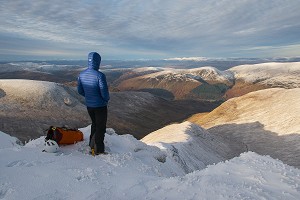
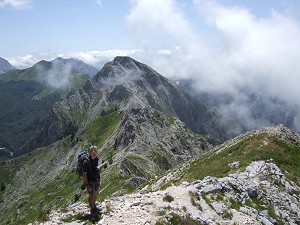
This article details the remit of the award, how to register for it and what exactly it covers. This article has been produced in conjunction with the Mountain Leader Training Association (MLTA).
VIDEO: International Mountain Leader Award
The course
Gaining an International Mountain Leader award will allow you to lead walkers across all mountain areas excluding glaciers, or places where the techniques or equipment of alpinism are required: so basically you should be 'walking' with clients rather then 'climbing'. You'll be able to take groups across snow, provided the terrain is of a gentle, rolling 'Nordic' type in the 'middle' mountains. There are two elements to the IML: Summer (general summer leadership) and Winter (the additional skills required in winter).
NB. IML training and assessment courses underwent some changes in 2007. If you took an 'old scheme' training course and haven't taken an assessment yet, you will have the opportunity to complete the new-style course as appropriate to obtain the IML award.
"What really struck me about the IML award was the difference between all the exams and training and working for real. Working as an IML is very much about people and sharing your love for the mountains with them - something it's difficult to pass an exam for.
The Union of International Mountain Leader Associations (www.uimla.org) works hard to have relevant mountaineering qualifications reciprocally recognised in different countries. However, internationally, British IMLs are quite a rare breed.
All of my work is in Europe, mostly France, where there are a fair few IMLs, and Accompagnateurs en Montagne, which is the French version. There are differences in training, and certainly in style, but the two are accepted as the same qualification. I've learnt so much from the French, who have had the Accompagnateurs en Montagne qualification in place for about 30 years. The Guide diploma has split into two - guides previously guided hiking as well - but there is still a strong tradition of the 'bonhomie' of guides among the Accompagnateurs.
It isn't always easy finding clients, but you can do as many of the French do, and work as an IML alongside another profession. They often have deep roots in their local culture and I know Accompagnateurs who are artists, writers, craftsmen and even shepherds. Working as an IML is such a rewarding experience. You often get as much back from the clients as you give. I work both with private clients and as a 'renfort' for La Compagnie des Guides de Chamonix, trekking, hiking, snowshoeing and even taking kids for rides through the forest on donkeys!"
Simon Blackmore can be found at: www.chamonixtrekking.co.uk
How to register for the award
You need to have gained the summer ML award and additionally have completed 20 Summer IML Quality Mountain Days and 20 Winter IML Quality Mountain Days (UK or overseas) before going for your IML. You also need a referee to endorse the registration application: preferably a Mountain Instructor, Guide or ML centre staff member. If you can't get this, then a long term climbing/walking partner or suitable employer will be considered.
What is a quality Summer IML Day?
A six hour day in mountains outside the UK and Ireland, that meets at least half of the following criteria:
- Planning, taking into account the weather
- In an environment below 3000m, you gained approximately 1000m
- In an environment above 3000m, you gained approximately 300m between each sleeping height
- Navigational skills: map, compass, altimeter, GPS
- Making decisions about route choice and judgement of terrain
- Ascending and/or descending steep broken ground
- Negotiation of sections of fixed equipment and/or small sections of snow as part of the normal mountain journey
- You increased your environmental knowledge
What is a quality Winter IML Day?
The criteria are the same as for the Winter ML scheme, but walks should take place in mountains outside the UK and Ireland. Quality Winter IML days should take five hours minimum and involve at least half of the following:
- Movement on snow
- Ascent and/or descent
- Planning around weather and avalanche forecasts
- Navigational skills: map, compass, altimeter, GPS
- Dealing appropriately with poor weather conditions
- Appropriate decision-making about route choice and judgement of terrain
- Evaluation of the snow pack and avalanche hazards throughout the day
- Increase in environmental knowledge
Training, consolidation and assessment
You can consolidate experience for both Summer IML and Winter IML concurrently but must attend Summer training before Winter training, and must complete Summer assessment before attending Winter assessment. You have to log 30 Quality Summer IML Days overseas, and 30 Quality Winter IML days (a minimum of 10 overseas) before the respective assessments.
Summer IML training courses take five days. As well as passing a training course you will have to pass an IML Speed Navigation Test at a UK National Mountain Centre. The four-day Summer assessment is a hut-based course, which takes place in the European Alps.
The Winter IML training and assessment courses are both five days long, and take place in the European Alps. To work as an IML with a Carnet and insurance you have to be a member of BAIML, the British Association of International Mountain Leaders: www.baiml.org.
- Therm-a-Rest Navis Sleeping Bag 7 Jul, 2013
- Scarpa Gea RS Ski Touring Boots 28 Apr, 2013
- Polvere Ski Mountaineering Skis 23 Apr, 2013
- Rab Infinity Down Jacket 7 Apr, 2013
- COMPARISON REVIEW: Mountain Hard Shells 4 Apr, 2013
- The Questionable Ethics Of Down Production 10 Jan, 2013
- WITH VIDEO: NEW TNF Summit Series Meru Range 12 Sep, 2012
- Autumn/Winter 2012 Polartec NeoShell Mountain Clothing 7 Sep, 2012
- The Trust: Ueli Steck and Scarpa Interview 21 Aug, 2012
- Patagonia Ultralight Down Jacket 5 Jul, 2012

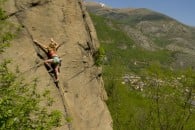

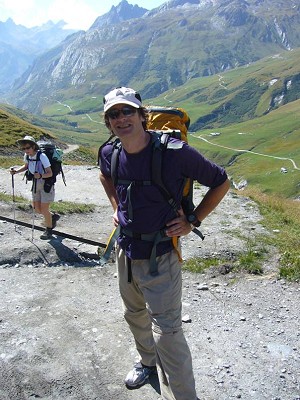
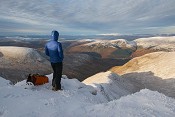


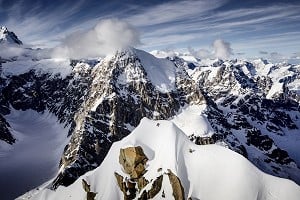









Comments